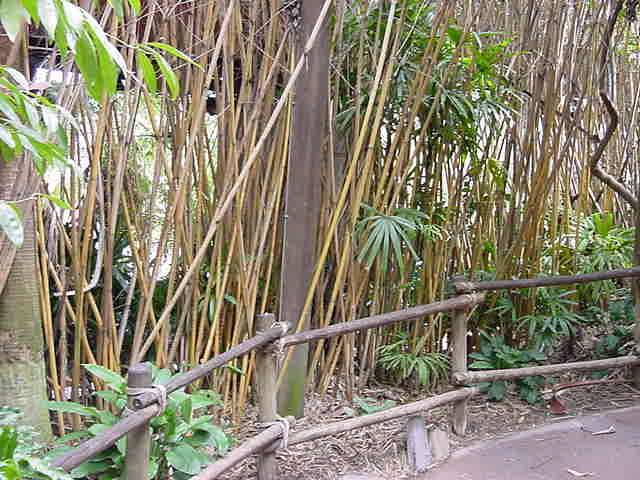
Exploring the Environmental Benefits of Tiger Bamboo
In an age where environmental concerns are more pressing than ever, sustainable practices and eco-friendly alternatives are receiving increased attention. Among the many innovative solutions emerging to address environmental challenges, one plant stands out for its impressive ecological benefits: Tiger Bamboo. This unique species of bamboo, known for its striking appearance and fast-growing nature, offers numerous environmental advantages that can help combat deforestation, reduce carbon emissions, and promote biodiversity. In this blog post, we will explore the environmental benefits of Tiger Bamboo and how it can contribute to a more sustainable future.
What is Tiger Bamboo?
Tiger Bamboo (scientifically known as Bambusa oldhamii) is a type of bamboo that originates from Southeast Asia. It is a member of the bamboo family, a group of plants renowned for their rapid growth, versatility, and sustainable nature. Tiger Bamboo, in particular, is recognized for its distinctive tiger-like stripes on its culms (stems), giving it its unique name. This bamboo species thrives in tropical and subtropical climates, making it ideal for regions that experience warm weather year-round.
While Tiger Bamboo shares many similarities with other bamboo species, such as its ability to grow at an astonishing rate, it stands out for its remarkable environmental benefits. Below, we will dive into these benefits and explore why Tiger Bamboo is considered one of the most sustainable plants on the planet.
1. Carbon Sequestration and Climate Change Mitigation
One of the most significant environmental benefits of Tiger Bamboo is its ability to sequester carbon. Like all bamboo, Tiger Bamboo absorbs carbon dioxide from the atmosphere as it grows. Bamboo is known for its rapid growth rate, with some species able to grow up to three feet in a single day. This fast growth makes bamboo a highly efficient carbon sink, as it absorbs carbon at a much faster rate than most trees.
Tiger Bamboo, in particular, is able to sequester large amounts of carbon dioxide, helping to reduce the concentration of greenhouse gases in the atmosphere. As the planet continues to face the challenges of climate change, planting bamboo species like Tiger Bamboo can play a crucial role in mitigating its effects. By acting as a carbon sink, Tiger Bamboo helps to counterbalance emissions produced by human activities, such as industrial processes, transportation, and deforestation.
2. Preventing Soil Erosion
Soil erosion is a growing concern in many parts of the world, particularly in areas that experience heavy rainfall or are prone to desertification. When the soil erodes, it can lead to the loss of fertile land, reduced agricultural productivity, and the degradation of ecosystems. Tiger Bamboo can help combat soil erosion through its robust root system.
The extensive network of roots that bamboo plants develop holds the soil together, preventing it from being washed away by heavy rains or strong winds. This is particularly beneficial in areas that are prone to erosion, such as hillsides, riverbanks, and coastal regions. By stabilizing the soil, Tiger Bamboo can help preserve the integrity of ecosystems and ensure the continued health of the land for future generations.
Moreover, bamboo’s ability to grow densely creates a natural barrier that helps protect vulnerable landscapes from further erosion. As a result, Tiger Bamboo can be used in reforestation projects and land restoration efforts to combat soil degradation and improve the health of ecosystems.
3. Biodiversity Enhancement
Bamboo forests, including those made up of Tiger Bamboo, contribute to the enhancement of biodiversity. Bamboo provides a habitat for a variety of species, from small mammals to birds and insects. These ecosystems are home to a rich array of plant and animal life, many of which rely on bamboo for food, shelter, and breeding grounds.
In particular, the dense growth of bamboo forests creates a unique environment that supports a wide range of species. For example, bamboo is an important food source for animals such as pandas, lemurs, and koalas, which depend on the plant for survival. Additionally, the shade provided by bamboo can create a microclimate that fosters the growth of other plant species, contributing to a diverse and thriving ecosystem.
By planting Tiger Bamboo in areas that have experienced habitat loss or degradation, we can help restore vital ecosystems and promote biodiversity. Bamboo forests can serve as refuges for endangered species and help maintain the balance of ecosystems that are crucial for the planet’s overall health.
4. Sustainable Building Material
Another environmental benefit of Tiger Bamboo is its potential as a sustainable building material. Bamboo has long been used in traditional construction methods in Asia and other parts of the world, but in recent years, its popularity as an eco-friendly alternative to wood and steel has grown significantly.
Bamboo is an incredibly strong and durable material, yet it is lightweight and flexible. These properties make it ideal for use in construction projects, such as houses, bridges, furniture, and flooring. In fact, bamboo is often referred to as the “green steel” due to its high strength-to-weight ratio.
Unlike traditional hardwoods, which take decades or even centuries to mature, bamboo can be harvested within three to five years. This rapid growth makes it a highly renewable resource, which reduces the pressure on forests and helps prevent deforestation. By using Tiger Bamboo as a building material, we can reduce our reliance on non-renewable resources like timber and fossil fuels, contributing to more sustainable construction practices.

5. Water Conservation
Tiger Bamboo also plays a role in water conservation. Bamboo is known for its ability to thrive in areas with low water availability, making it an excellent choice for regions that face water scarcity. Additionally, bamboo plants have deep root systems that help retain moisture in the soil, reducing the need for frequent irrigation.
In addition to its water retention properties, bamboo can also help filter and purify water. The dense bamboo foliage acts as a natural filter, trapping pollutants and impurities before they can reach waterways. This makes bamboo a valuable plant for protecting water quality in both urban and rural areas.
By promoting the growth of Tiger Bamboo in regions affected by drought or water pollution, we can improve water management practices and contribute to the sustainable use of water resources.
Conclusion
Tiger Bamboo is more than just a visually striking plant; it is an environmental powerhouse with numerous benefits. From carbon sequestration and soil erosion prevention to biodiversity enhancement and water conservation, the environmental advantages of Tiger Bamboo are clear.
By incorporating this fast-growing, sustainable plant into our land management and building practices, we can contribute to a healthier planet and a more sustainable future. As we continue to face the challenges of climate change and environmental degradation, Tiger Bamboo offers a promising solution that can help mitigate these issues.
For those interested in the latest developments on sustainable bamboo practices, be sure to check the latest updates on ongoing research and initiatives. Whether used in reforestation projects, as a building material, or as part of a broader sustainability initiative, this bamboo species has the potential to make a significant positive impact on our world.
By embracing Tiger Bamboo and other eco-friendly alternatives, we can take meaningful steps toward protecting the environment and preserving the planet for future generations.





